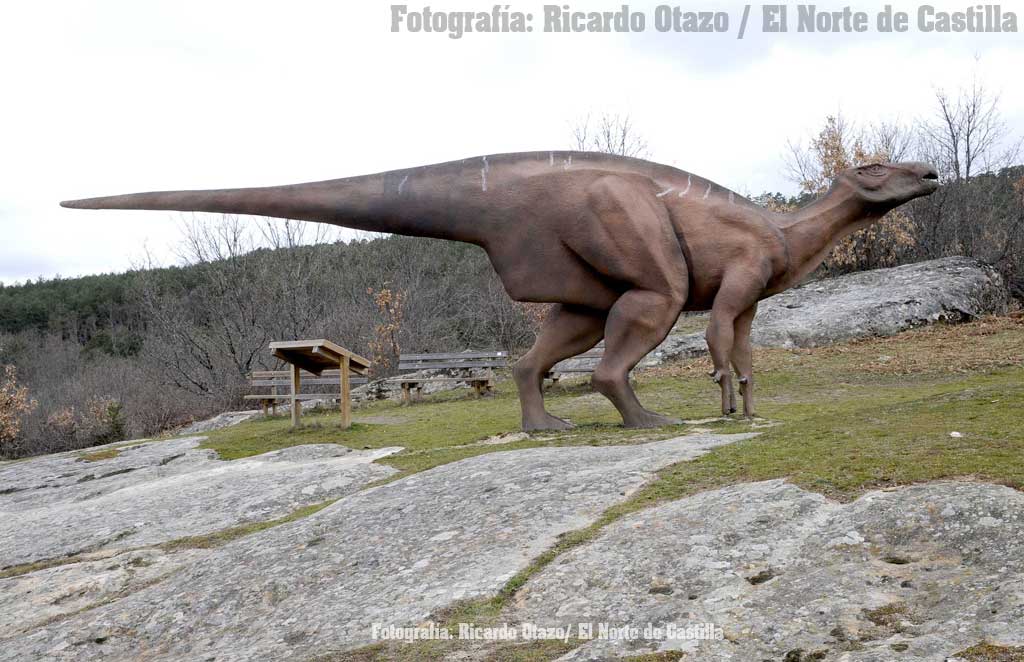Located in the village of Regumiel de la Sierra in Burgos province, it is worth mentioning the fossil remain left by the quadruped that left tracks over 60 centimeters long, suggesting a dinosaur approximately 10 meters long. Not open to visitors.
The El Frontal site has recorded 86 fossil tracks grouped into eight trails and separate impressions. Most of the tracks are by iguanodontids, perhaps belonging to members of the same species. One footprint has been identified as a small theropod (carnivorous or carrion eater), that walked upright with long, narrow footsteps and slender toes with sharp tips (claws).
Two trails of quadrupeds stand out among the iguanodontid tracks. They have wide three-toed "feet" with short, stubby toes; the impressions of the "hands" are oval-shaped. Some studies have proposed that these impressions indicate that two of the central fingers were joined together, while another finger remained separate from them. The fingers on the side, including the "thumb" or bone spur characteristic of iguanodontids, normally did not reach the ground.
Cretaceous period rivers: The sandstone rocks where the fossil impressions at the site were preserved are plentiful in this region. They come from the sands deposited in the riverbeds and fluvial plains of the great rivers 125 million years ago. The dinosaurs had enough water and vegetation available there to drink and feed in a subtropical climate, and in the sandy mud of those fluvial plains they left their footprints imprinted for posterity.
During the early Cretaceous period the seas and oceans on Earth developed in an entirely different way from the ones we know today. The present day Iberian Peninsula was an island surrounded by seas that separated it from the rest of Europe.










